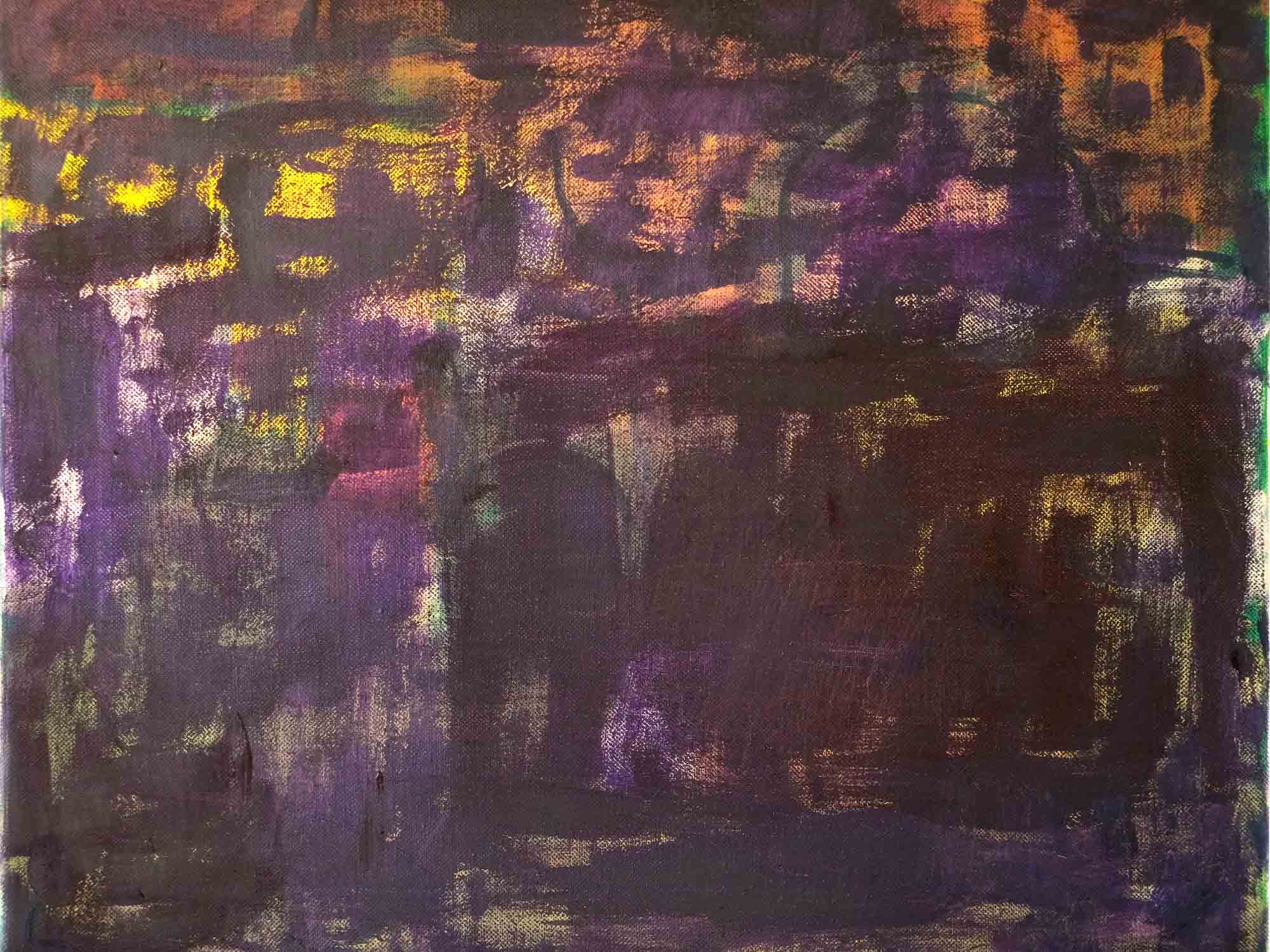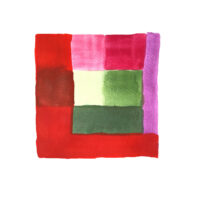Gravity is the law of the earth. It is the law of realization and load. People who can gently carry their wounded beings turn the heaviness into grace.
Early this morning, on the way to the train station – the place of revelation – I saw some African men waiting silently on the side of the road at dawn until they were picked up for fruit picking. Immediately I turned my gaze to the other side. Because I could not find enough strength for mercy in myself. Because I myself was wounded by their apparent vulnerability and could not carry that wound. Their wound. Not mine.
Many people experience today’s world situation as a ‹difficult› time for very different reasons. A lot of things are pressing and burdening. To such an extent that the forces to carry are no longer sufficient. There seems to be less and less that carries us. Almost as if gravity had increased. In such moments, the vulnerability of our humanity is revealed. It reveals itself exactly where we are most vulnerable, where there is a living connection. The connection of all living beings forms the potential basis of our history on earth. A story that only exists if we can share it with each other in this sense. A living context is not a predetermined or preformed context in which the connection varieties have been imposed. It’s not a system. Context is created. Always anew, in every moment. It is about an act. Only an individual can create context out of himself; only by his deed can it continue.
If this living connection can no longer be revealed, whether as an effecting idea, as a possibility of an act, or both, we are facing a problem today. The enormous complexity that manifests itself in the various competing crisis areas resists the revelation of a living context. Not because of the context but because of the living.
Fear spreads from an existential need, the need for power, and the urge to solve or at least unravel this complexity. Self-defense, protecting oneself, and demarcating are all strategies to maintain or regain control over one’s own property.
This can break a living connection. It disintegrates into individual pieces, shattered in an ever-expanding duplication. It becomes a universe of networked abstractions. Many people break because of this. It is through this that the human condition in us breaks down.
Without the living context, one finds oneself in the cold of anonymous indifference. An empty shell that can have no interiority, only a smooth surface. It is the place of the greatest vulnerability. And at the same time, the place where it becomes apparent that only where we are vulnerable can humanity rise again in each of us.

In the Beginning of the Power of Creation
Life, which is referred to here as a ‹living context›, is presented by Rudolf Steiner as a creative principle. Principle means: that which can set in motion a dynamic, a process, which is realized over time. In a lecture on Manichaeism, Steiner describes the principle of life directly together with the principle of form. 1 Two principles from whose constant interaction through time new things can be produced. The new does not appear all at once, it is not a final form, but in the course of time it takes on a constantly changing form, a temporal form. What runs through is the interaction between the two. On the one hand, the principle of life is effective. It contains in itself the possibility of taking shape. This potential carries within itself the intention to take shape. For this, the principle of life requires the effectiveness of the principle of form. Both are equally creative, although their effect is opposite. The form stops the emanating creative potency of life, limits it, and offers it the necessary resistance. Only when both meet can there be a talk of a connection.
Life, insofar as it is interpreted as a creative principle, is not the same as ‹bios›, the natural life. Natural life has been assigned to us. We did not participate in its creation. Life as potency, as pure wealth, can only be realized in a formative movement that finds its origin in me. Asking oneself what the cause of this movement is can only distract from external motives. But the real reason for this movement can only be found in me, where I can stop for a moment at the source of my creative power. I am not only at the origin but also in the origin. I am within myself.
I am in myself, where I am vulnerable. Where I can become creatively active.
Deprived of the present
«In some big European cities, people slept on the streets this summer. They slept in front of a building whose door would not open until 9 a.m. the next morning. They slept there all summer. When evening came, they sat down on a piece of cardboard or some plastic bags and waited until night came and they could lie down. As soon as the first morning light came, they stood in line again so that their place would not be lost. The door was opened. A ritual that was repeated every day began. Their names, which they had written on a piece of paper when they registered, were retrieved. Sometimes they were two or three hundred—the number of people called rarely exceeded twenty. In the crowd and the shouting, there were also children. It was not easy to understand immediately at the first call. Often a name came out quite differently, as if strange. Maybe that was my name? Every day this tense, exaggerated listening, whether not this time? Listening where you can not allow yourself a moment to think of something else, let alone to address a fellow human being. Not only do you not get access to the space out there, but time is also taken away from you. Condemned to just being able to wait to see if you hear your name.»2
I am within myself. Where I am vulnerable. Where I can become creatively active.
What I read sounds like a picture from a mystery drama. In ‹Gravity and Grace›, Simone Weil points to similar situations in Europe – where countless people waited for their names to be called – images of the greatest mystery of human existence. It is the situation in which every human being is born entirely at the earth’s mercy. Being at the mercy of others, not as a state created by the machinery of history or by power-political interests, but an intrinsic part of the essence of every human being: the mystery of the incarnation. I am vulnerable by nature. It is the place where every person carries a wound from birth. Every human being is born in a state of complete helplessness. As a newborn, he is at the mercy of a set of actions he cannot perform himself. He cannot breastfeed, keep warm, or protect himself.
This is precisely what Simone Weil calls misfortune («le malheur»), and she compares this situation of being entirely at the mercy of the arbitrariness of a foreign will with slavery: «Why is subordination to arbitrariness slavery? The last reason lies in the connection between the soul and time. Whoever is subject to arbitrariness hangs by the thread of time. He waits (the most humiliating situation) for what the next moment will bring. He does not have his moments; for him, the present is no longer a lever that affects the future.»3 She understands pain and suffering («la souffrance») as consequences of this primordial vulnerability, this wound with which every human being is born.
Two Forces Rule Over Space
«Gravity pulls down,» writes Simone Weil at the very beginning of the notes, which are bundled in ‹Gravity and Grace›. Like no one before her, she not only depicted this law but also experienced it. It’s not just physical laws. They can be transferred to the mental, even to the spiritual level. Gravity is the law of creation par excellence. Simone Weil describes it as «a downward movement.» 4 At the same time, a kind of compaction takes place until the point is reached where the contraction reaches its own limits. Matter arises as what has become, that which no longer develops further and offers resistance. Like a hardness. Hardness to wake up to. A hardness that can also wound you.
The step from the ‹refugee› to the ‹migrant› is the step from a hard but potentially dignified to a hard and de facto unworthy life. The tens of thousands of people trapped in this trap are deprived of their lifetime – a human right – by a conglomerate of agreements and negotiations. Their misfortune has crossed the line of spontaneous helpfulness. Bound to a point without expansion in space and time, they have reached the status of non-existent.
Amazing how easy it is to walk past them. Gravity has done its job on them. «Why is it that as soon as a person realizes that he needs another more or less, this latter moves away? Gravity.» 5
Gravity is the law of creation par excellence.
Simone Weil interprets gravity as an effect and the phenomena by which it can be recognized as ‹lowliness›. 6 The heart can no longer rise. It becomes ‹heavy.› So there is a limit in the compaction process from which, once it has been crossed, no return is possible. Lowliness begins where this limit has been crossed. You can no longer stay at altitude. Above this limit, one could perhaps still speak of a certain ‹inertia of the heart›; for example, if you are so preoccupied with your own worries and self-preservation that you cannot perceive the suffering of the other. Below there is only lowness as a phenomenon of the effects of gravity. And the consequences of what is the primordial vulnerability of every human being. The falling down has become irreversible, literally ‹to the bottom›, to the ground, it goes. For Simone Weil, this means having fallen below compassion at the same time. «An oversized misfortune leaves a human being beneath pity: disdain, horror, and contempt; compassion only descends to a certain level and not below? How can mercy still succeed in descending from it?» 7
The downward movements as phenomena of heaviness are sketched by her with simple strokes. And always surprise. For example: moving away in mind and thinking from someone who needs you, who needs your help. ‹Drop him›, as it is aptly called. First and foremost, it is the one who moves away, who has come into the grip of this downward movement, not the one who has been left to his own devices by him. Perhaps an ‹abandoned› person is not necessarily the one who, although humiliated, therefore becomes a member of lowliness. Perhaps he is still capable of mercy, for mercy belongs to the depth, not to the height. Perhaps this is why the abandoned and non-existent person can look into their depths.

Carrying Down Without Gravity
It may come as a surprise how both Rudolf Steiner and Simone Weil bring heaviness and light into an interrelationship. «Light flows upwards, heaviness weighs downwards,» says Rudolf Steiner using this saying for the eurythmic work. Also surprising because heaviness and light do not directly form an opposition. Nor are they meant as opposites. Light and darkness would be opposites. To honor their peculiarity means, for example, not to replace the heaviness with darkness or to want to overcome the heaviness with lightness. The wonderful eurythmic depiction reveals how both condition each other without losing their peculiarity. Their respective gestures start in the area of the other: the heaviness in the area of light and vice versa. This opens up a third area, a place of origin, of creative potency.
For Simone Weil, however, the focus is on the question of whether it would be possible to carry down without heaviness. Or vice versa: Could you fall to the top? «Gravity pulls down. The wing carries upwards: Which wing in the second potency can carry downwards without heaviness?» 8 Grace is this wing! The grace, which first reveals itself as an upward movement, becomes effective in the second potency. That is: in downward carrying without heaviness. The primordial vulnerability, ‹misfortune›, and all its consequences that we may encounter in life render us defenseless against gravity. Grace is not what balances gravity but only becomes effective in the downward movement. Grace is the exception because it descends into the depths without gravity and causes us to find in this depth the place where wound and essence, vulnerability, and potency only show up in us as one and the same place. «The gravity of the mind makes us fall upwards.» 9 We are in grace.
Between
your eye brows
is your origin.
A cipher from the oblivion of the sand.
You wangled the
sea sign
twisted
in the vice of longing.
You sow yourself with all the grains of seconds
into the outrageous.
The resurrections of your invisible springs
are bathed in tears.
Heaven is practicing breaking
on you.
You are in grace.
From: Nelly Sachs, Works. Edition II. Poems 1951–1970, Berlin 2010, p. 76. Translation: Monika Werner













